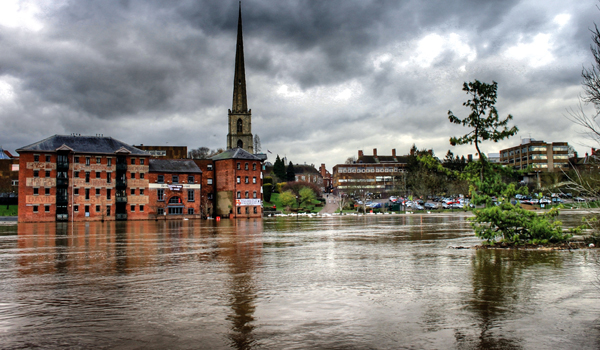Using social media to predict floods
The emergency services could soon harness the power of social media to get warnings about extreme weather events such as hurricanes, storms and floods before they happen.
The emergency services could soon harness the power of social media to get warnings about extreme weather events such as hurricanes, storms and floods before they happen.
Researchers have discovered that photographs and key words posted online can signal weather risks developing in specific locations and times like water levels rising before a flood.
Nataliya Tkachenko and a team at the University of Warwicks Department of Computer Science, say these words can be used as social sensors, to create accurate early warning system for extreme weather, alongside physical sensors.
They found that tracking certain words used in social media posts around the time of an extreme weather event such as water and river when there is a flood risk allows information to be collated to accurately predict which areas will be affected, and how big the impact will be to infrastructure and human life.
The researchers tracked photographs and videos with tags such as river, water and landscape on the social media platform Flickr between 2004 and 2014.
While these words can be used to generally describe natural scenery, researchers found that in certain time periods before the peak of extreme weather events and in the locations where they occurred these words took on a distinct meaning of forecast and warning, showing the weather worsening.
The research, Predicting floods with Flickr tags, said these risk-signalling words can act as social sensors, which when used alongside physical meteorological sensors can help to improve the prediction and monitoring of the behaviour and severity of an evolving weather event in multiple areas.
Physical sensors such as flood monitors have traditionally been used to detect extreme weather events, but the researchers say their scope is limited, and they cannot accurately cover each specific area which may be affected in the same way that social media can.
Ms Tkachenko says social media is currently used as an effective tool for now-casting providing eyewitness accounts of ongoing events but has not yet been harnessed for predicting large-scale events that are still developing.
She believes using social media and physical meteorological sensors together would create an early warning system for extreme weather events of unprecedented accuracy and efficacy.
Our analysis demonstrates that metadata in social media image postings enables them to be used as social sensors, which can serve as a valuable supplement to instrument-based systems for predicting and monitoring floods, and other kinds of natural hazards, added Ms Tkachenko.
The opportunities represented by these new data sources are truly exciting as they can help to protect homes, save lives and design more resilient cities.




